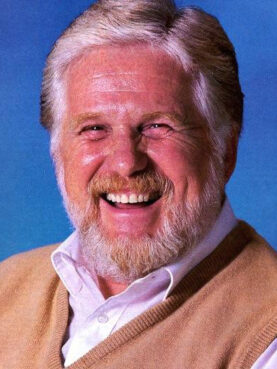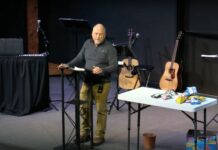“We did not take this decision to withdraw from the Association of Vineyard Churches quickly or lightly, but reverently in the fear of the Lord,” the church’s board wrote in a March 20 statement affirming the decision to leave. “We have waited before the Lord and sought His counsel and direction in scripture, prayer, and the counsel of others.”
The departure of Vineyard Anaheim marked the end of an era for the Vineyard USA. The church was one of the earliest churches of the movement and for decades had hosted national Vineyard meetings. More than that, it had been the Vineyard’s symbolic home for decades — a place that helped launch the contemporary worship music revolution and made charismatic practices commonplace in many churches.
The decision to leave also reveals the growing challenges facing many Protestant groups: the decline of denominational loyalty, the rise of “pastor-warlords” who run their churches with little or no accountability and the influence of so-called Network Christianity, a growing movement led by pastors and apostles who claim to hear directly from God and turn their churches into personal platforms for spiritual influence.

John Wimber. Photo courtesy of Vineyard USA
Led by a Wimber, a former musician turned charismatic preacher who championed “power evangelism” that combined clear Bible teaching with the signs and wonders found in the New Testament, the movement grew from a handful of churches in the early 1980s to a worldwide network of more than 2,400 churches and a musical empire.
Before Hillsong — the troubled Australian megachurch and music empire — there was the Vineyard.
Vineyard songs such as “Breathe,” “Lord Reign in Me,” “Refiner’s Fire,” “Hallelujah” and “Come, Now Is the Time to Worship” combined the adult contemporary melodies and grooves of the 1980s and 1990s with spiritual themes. Churches began to replace traditional hymns with the popular, easy to sing songs — helping spark what became known as the “worship wars” in churches.
Leah Payne, associate professor of American religious history at George Fox University and Portland Seminary, said that like Hillsong, the Vineyard has had an outsized influence on charismatics, evangelicals and Pentecostals because of the popularity of its music.
“They were really skilled at taking whatever the popular trends were in pop music and adapting them,” said Payne. “I think of them as the ultimate ‘Jesus is my boyfriend’ kind of music.”
The Vineyard, said Payne, also helped mainstream charismatic practices like raising hands in worship, speaking in tongues and proclaiming “words of knowledge,” where leaders or worshippers get insights from God about certain people or specific situations. Often, said Payne, they’d do this in a laid-back, matter of fact manner, as opposed to the more extravagant forms of Pentecostal faith healers and televangelists.
“They did it in a way that was cool, for lack of a better word,” said Payne.
The Vineyard also played a role in Bob Dylan’s dramatic conversion to Christianity, which led to his albums “Slow Train Coming,” “Saved” and Shot of Love.” His then-girlfriend, Mary Alice Artes, introduced the legendary songwriter to the Vineyard and for a time he studied with the group.

John Wimber. Photo courtesy of Vineyard USA
By the time Wimber died, after a series of health problems, there were close to 500 Vineyard churches in the United States and more than 200 overseas, the Los Angeles Times reported at the time. The group had grown in large part due to Wimber’s dynamic leadership and force of will. In the group’s early years, there were concerns that if he died, the movement would fall apart.
“There would be no force to hold it together; he’s the cohesiveness, the central figure,” Jack Deere, a leading Vineyard minister, told Russell Chandler of the LA Times in 1990.











